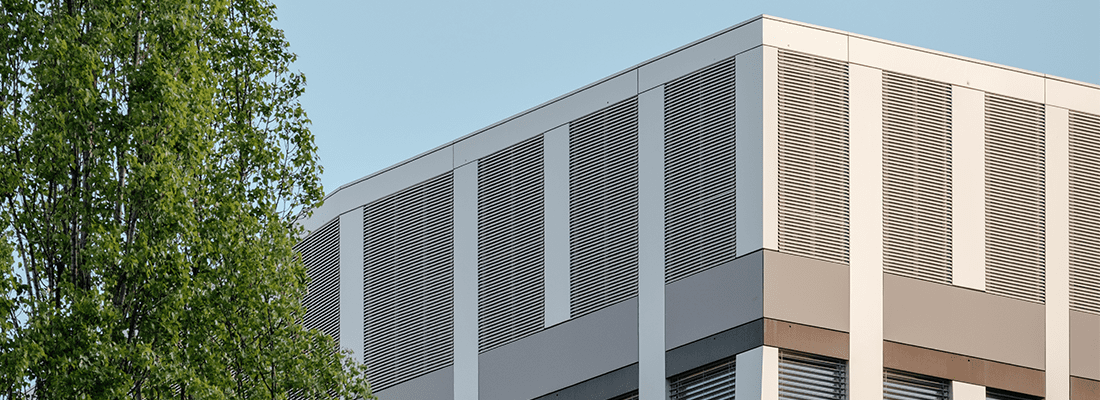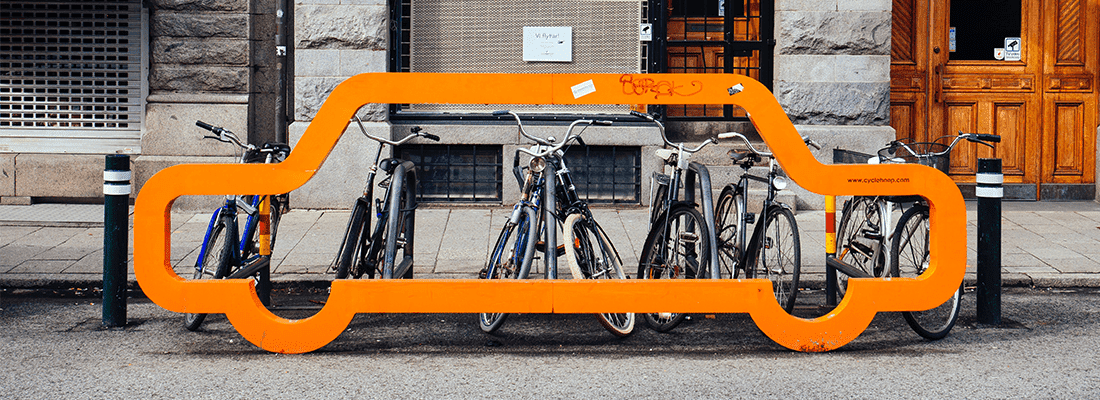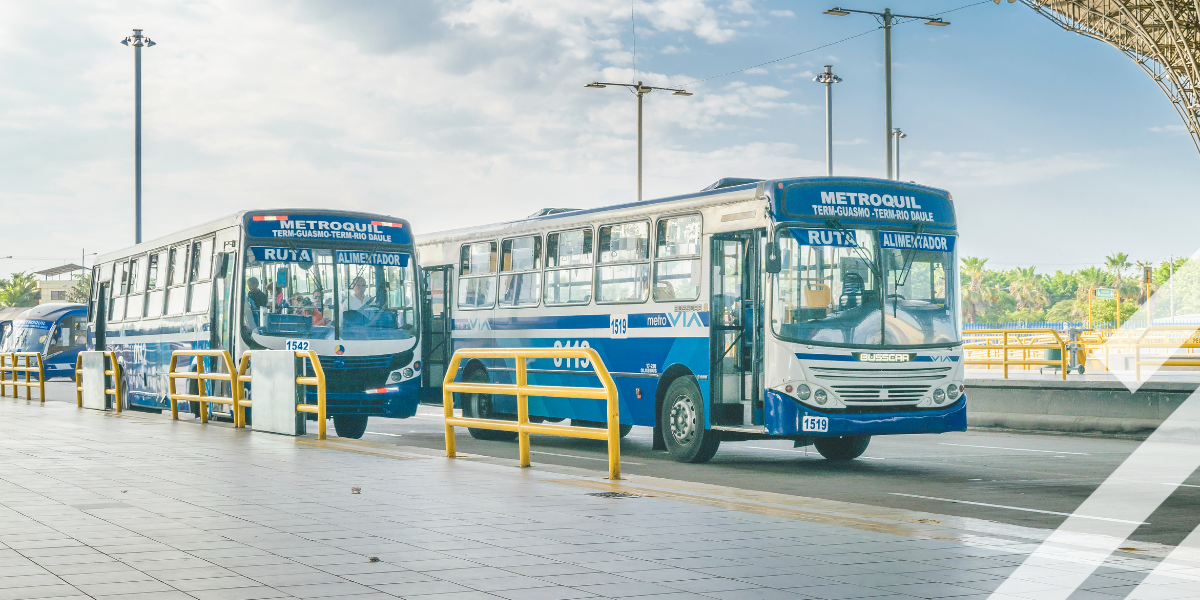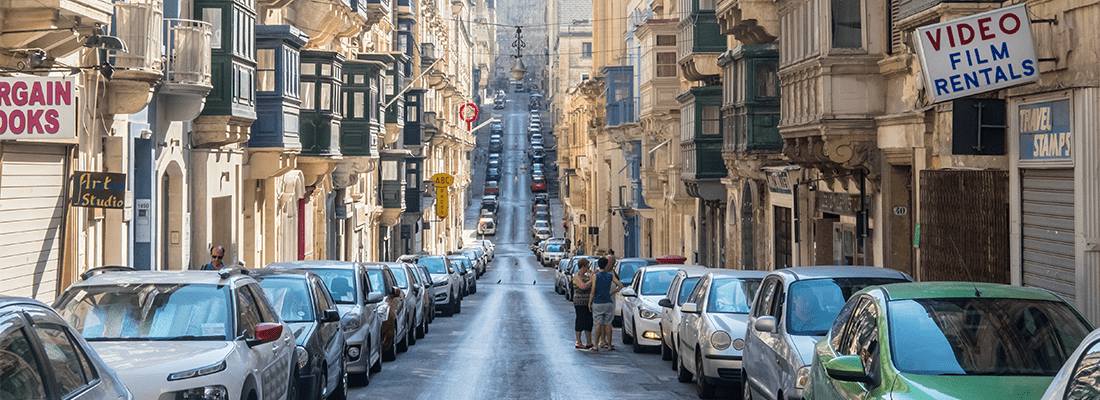Hot topics in the coming years in rural and urban development seem to mostly revolve around the sustainability and livability of cities. Striving towards changes in these areas, however, has a huge impact on mobility in cities.
Lately, plans are formed and cities are changing rapidly; Carbon neutrality is one of the main goals and is recognised and rewarded by the European Commission. Cities are striving to add more green, lessen the number of cars by making it more expensive and difficult to navigate throughout the city centre. Furthermore, governments encourage the usage of biking and public transport, along with shared vehicles and electric vehicles.
Old parking spaces are converted to green area’s
When wanting to make the city more liveable, most cities strive to protect the green within the city or even to add more green in the form of parks and green roofs. In some cities, such as Amsterdam, a resident can be subsidised for creating a green roof; these roof gardens, filled with plants and moss, isolate homes and contribute to the carbon-neutral footprint of the city. It is a great way to make use of otherwise useless space.
For the creation of more parks, however, more space needs to be created. A trend in Europe seems to be to cut down on on-street parking spaces and use this room for livability. Old parking spaces are converted to green area’s or used as parking for (electric) bikes. Amsterdam, for example, is planning to get rid of 11.000 on-street parking spots in its city centre according to new city plans.
Less parking spaces could equal more trouble finding parking, as parking can already take up to twenty minutes per day and therefore cause more emissions.
Smart solutions in the form of start-ups and corporate companies focus on making parking more efficient. Whether this is an incorporation of empty parking spaces in your GPS or by giving companies, businesses and individuals the chance to open up their off-street parking to other drivers. RAI Amsterdam offers its parking spaces when available. Making use of these new efficient practices will be done for sure in the foreseeable future as it will be necessary.

Less number of cars equals less emission
In multiple cities, the usage of a car is becoming increasingly expensive and difficult to use. The ease for a car user is declining quite a bit. Car sales were actually already lower in 2018 in comparison to 2017. Which will probably continue to be a trend in 2019. Besides the previously mentioned lessening of the number of parking spaces, parking is becoming more expensive. In certain European cities, parking your car can cost up to €7,5 per hour and taxes can be on the high side.
Besides the parking costs, car costs and parking problems, some cities strive towards a car free city centre, such as in The Hague & Oslo, or will put restrictions on the cars which are allowed into the city centre. In Paris, for example, cars are not allowed in if the pollution in the air is too high. Which means at certain times it is not allowed for car-users to enter certain areas whilst other times it is. In Brussels, however, less environment-friendly cars are not allowed in the city centre at all. In these Low Emission Zones (LEZ), it is often required to have a sticker on the car which lets the authorities know if your car is eco-friendly enough and thus if you are allowed into the zone. Here you can find some more examples of implementations cities have made while striving to go car-free. These restrictions make it much less attractive to travel by car into the cities and results in drivers searching for different methods to enter a city.
Increase of bike-lanes and reduced fares in public transport
Luckily, whilst the car-mobility gets restricted, European countries are compensating by making their public transport more accessible. They do this by laying the focus on the public transport infrastructure and by reducing the fares substantially. A lot of cities have opted for either free or reduced rates on public transport and more people started using this means of transportation. Additionally, public transport is becoming more customer-centred and data-driven, which results in a more positive experience and thus will likely result in a continuing increase in users in the coming years.
Furthermore, developing bike plans for cities is a higher priority than before. This is noticeable in both Europe and in the US, where more cities are including bike plans in their logistics. You will see an increase in bike lanes and bike usage and more rules concerning safety for both bikes and cars. Not only will the number of bike lanes grow, but the number of parkings for bikes will also have to be considered.
In addition to the increase in bike-lanes, the increase in public transport will result in more pedestrian ways and diverse solutions for ‘the last mile’. For some cities, this can change a lot of the infrastructure and rules in traffic. In others, it will simply result in an increase in pedestrians and smaller vehicles, such as bikes and scooters.

Shared vehicles
Besides public transport, shared vehicles are encouraged. Sharing vehicles saves on the cost/emissions of the production of vehicles and also on the overall emissions of vehicles on the road. Bike-sharing and ride-sharing are pretty huge in China and in other countries around the globe. In 2017 Lisbon launched a bike-sharing scheme, with electric bikes to encourage cycling in the hillier parts of the city. You can find increased examples of ride-sharing and car-sharing platforms through Europe. And in the Netherlands and the US, you can find carpool lanes for cars which carry multiple people. Because this is quite a new phenomenon, in the coming years you can expect more rules concerning these types of transport and ideas on storage for these vehicles. Furthermore, it might also result in fewer (owned) cars/vehicles on the road.
Electric vehicles
Whilst shared/public transport is booming and cars are experiencing a steady decrease in sales, you would assume that the sales of electric cars would be rising. In Norway this is certainly the case; almost a third of all car sales in 2018 were electric. In most countries, however, Electric Vehicles (EV) and their sales are still in its early stages. Taking into consideration that currently it is often subsidised and promoted to buy an EV and that polluting vehicles are obstructed in an increasing number of cities, these measures will most likely result in more people buying an EV in the near future. Especially when the benefits of EV driving will be more clear to the public. A recent study, for example, showed that electric cars are already cheaper to own than a regular car and more facilities are emerging for this branch. Some companies are already facilitating the EV movement, by letting EV owners know where to find electric (off-street) parking and where to find charging stations.
When the EV will experience its rise, more charging stations will have to emerge and parking for electric vehicles will become more of an issue. Expectantly current on-street and off-street parking will be refitted for EV parking.
Forecast
As you might have noticed, livability and environmental awareness have a huge effect on the layout and mobility of a city. It seems as if transportation will lean towards public and shared forms of transportation and electric cars will be on the rise. In addition, the decrease of on-street parking spots and decrease of focus on infrastructure for cars will most likely evolve into certain other changes within mobility. Some things to expect:
- In the coming years, the destination traffic will experience more trouble parking and will switch to carless/electric delivery of supplies/services more often.
- Parking is going to change to mostly off-street parking.
- There are going to be more rules about the usage of shared vehicles.
- There will be more electric charging points and electric parking.
- We will experience an increase in pedestrian and bicycle routes and off-street bicycle parking.








